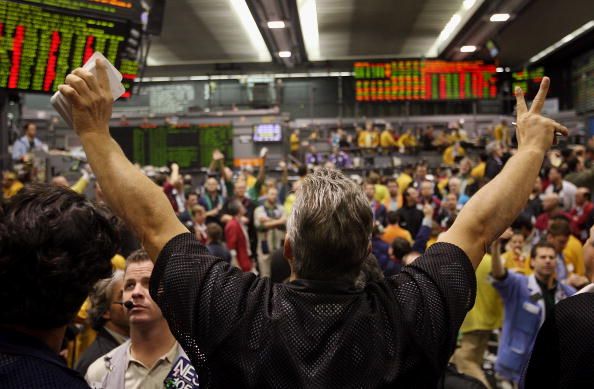Even by the standards set recently, yesterday was a painful session for stock markets.
The FTSE 100 dropped nearly 10%, while the DAX and the CAC 40 declined by more than 12%. Italy is the epicentre of the coronavirus crisis in Europe, and that was reflected in the markets as the FTSEMIB lost almost 17% - its worst single daily loss ever.
It was a broad based sell-off as traders cut and ran from every sector. Dealers were gripped by the fear there is going to be a global slowdown, so they exited their equity positions. More countries are taking measures such as closing schools, universities and non-essential services. As the health crisis deepens, so does traders hysteria. Dealers are frightened that countries in the west could be facing lockdowns.
The leisure and tourist industries have been hit particularly hard, especially in light of the US’s ban on passenger flights from Europe. The Trump administration announced the plan on Wednesday as a way of curtailing the health crisis at home, but airline stocks on both sides of the Atlantic suffered greatly.
Overnight there was huge volatility in Asian stock markets as some indices saw their biggest daily percentage declines since the financial crisis, but the equity benchmarks have recouped much of their losses. Japan’s Nikkei 225 was at one point down 10%, while now it is only down roughly 4%. The Reserve Bank of Australia injected AUD$8.8 billion into the short-term lending market as a way of easing credit conditions for its local banks. The ASX 200 is now approximately 4.5% higher on the session despite previously being in the red. European stocks are tipped to be mixed at the open.
In the eyes of the markets, the European Central Bank’s update yesterday was a let-down. The ECB kept both the refinancing and the deposit rate on hold. Traders were not anticipating the refinancing rate to be moved, but the markets were pricing in a 100% chance of the deposit rate being lowered by 0.1%. The ECB’s chief, Christine Lagarde, announced €120 billion of quantitative easing, as well as a new targeted lending operation that should be of assistance to SMEs. The central banker knows full well the ECB doesn’t have a whole lot of room to manoeuvre, and that’s why she called for a fiscal response too.
Financial markets have become overly dependent on loose monetary policy from central banks around the world, so when they don’t get what they want, they sometimes throw their toys out of the pram. When speaking about the government bond market, Ms Lagarde, said it’s not the ECB’s job to ‘close spreads’ – dealers didn’t care for those remarks. Despite some assistance being revealed for the euro area economy, there was a huge fall in eurozone equities as well as the euro.
The mood on Wall Street was bleak too as The Dow Jones suffered its largest daily percentage drop since ‘Black Monday’ in October 1987. The bearish sentiment in the US couldn’t be contained even though the New York Federal Reserve ramped up its overnight funding operations to more than $500 billion last night, and it will do $1 trillion worth tomorrow. The Trump administration has yet to deliver a stimulus package to combat the health crisis, but then again, traders are so panicked, the package might not calm their nerves.
Commodities also had a brutal time yesterday as selling was motivated by the fear that global demand for minerals will slump. The already weakened oil market suffered, partly due to the Saudi-Russian price war, where the former wants to ramp up supply as a means of driving down the price to punish the Russians for not playing ball with regards to the proposed OPEC+ productions cuts. Gold, silver, platinum as well as palladium all incurred sizeable losses – the greenback’s rally impacted the commodities market.
The final reading of German CPI for February will be posted at 7am (UK time) and economists are expecting 1.7%. The final reading of French CPI is expected to be 1.6%, and the report will be posted at 7.45am (UK time).
The preliminary reading of the University of Michigan consumer sentiment is tipped to be 95, which would be a drop from the 100.9 registered in February. The update will be released at 2pm (UK time).
EUR/USD – Tuesday’s candle was a daily bearish reversal, and a further move lower might see it target 1.1066, the 100-day moving average. The long wicks on yesterday’s candle suggests indecision. A retaking of the 1.1200 area might pave the way for 1.1495 to be retested.
GBP/USD – has been moving lower recently and while it holds below the 200-day moving average at 1.2705, it might fall to 1.2491. A rebound might target 1.2988, the 100-day moving average.
EUR/GBP – rallied from mid-February and while it holds above the 200-day moving average at 0.8743, the outlook should stay positive, and it might retest 0.9019. A move below the 0.8800 zone could bring 0.8600 into play.
USD/JPY – Tuesday’s candle has the potential to be a daily bullish reversal. If the market rises, it might target the 200-day moving average at 108.26. While it holds below the 106.00 mark, the wider bearish move could continue, and it might target 101.19.
.




